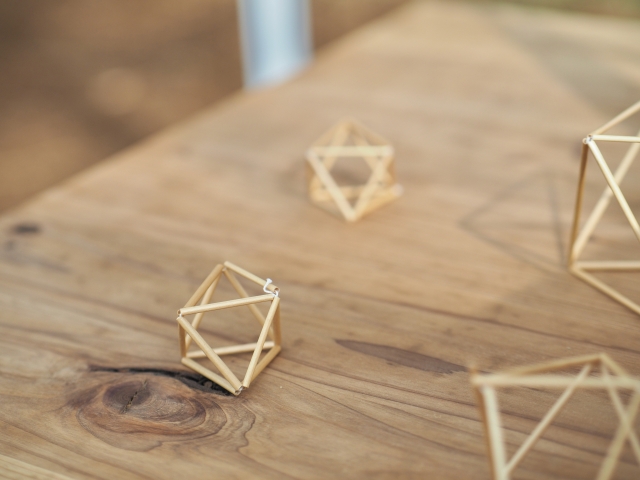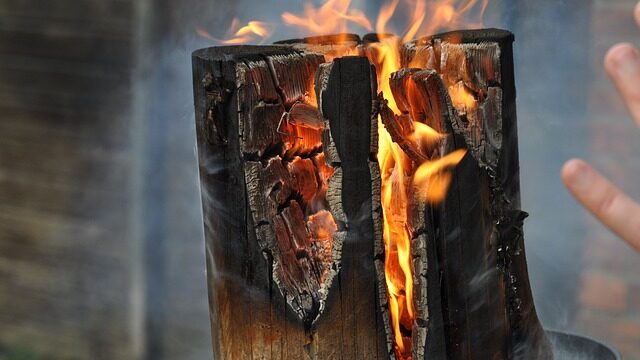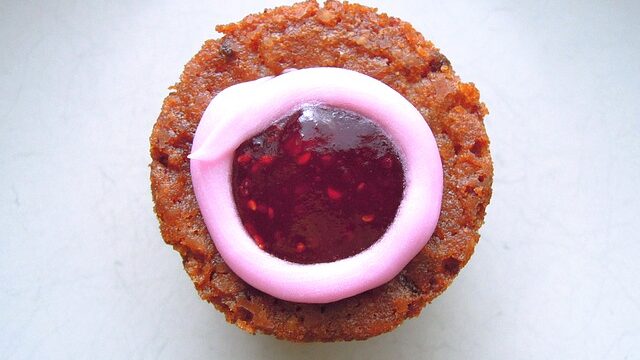In Nordic countries, winter brings shorter hours of daylight and longer hours of darkness when the sun is not seen.
And in Finland, located at a high latitude, winter daylight hours are even shorter than in Japan.
In some areas, the sun rises only a few hours a day.
Himmeli, a traditional decoration, was born in such a harsh environment. In Finland, they have long been called ” mobile of light ” and are loved as room interiors.
In this article, I would like to introduce Himmeli, a fashionable item with a unique geometric pattern.
What is Himmeli?
Himmeli is a traditional Finnish decoration made by threading dried wheat straw or straw into a three-dimensional geometric pattern.
The word “Himmeli” is said to come from the Swedish word “Himmel,” meaning “heaven.”
Himmeli is usually hung from the ceiling as interior decorations.
The warm texture of the straw weave and the thoughtful design with its unique geometric patterns are appealing.

They are popular not only in Nordic countries but also in Japan.
Furthermore, the straw used to make Himmeli is mainly rye, a grain that grows in cold climates.
This is because rye has long been cultivated in northern European countries, including Finland, as a crop that can grow even in cold climates.
Himmeli is made by reusing the leftover rye straw after harvesting.
Dates from the 12th-century winter solstice
Himmeli is also known as a “mobile of light.”
A mobile is a type of interior decoration that hangs from the ceiling and features a three-dimensional design floating in the air.
It is a “mobile of light” related to the history of Himmeli, which is described.

In Finland, there used to be a winter solstice festival to pray for the sun and a good harvest.
The Himmeli was used as a symbol of the sun.
To elaborate, it is believed that Himmeli began to be used in Finland around 1150.
In ancient Nordic countries, before the arrival of Christianity, the winter solstice was celebrated as the sun god’s birth festival and the agricultural god’s harvest festival.
This event is held annually in late December.
It is called the Winter Solstice Festival or Joulu.
In Finland’s high latitudes, there are very few hours of daylight during the winter months, and most of the day is dark.
Ancient people had a custom of holding the Winter Solstice Festival as a sacred event to pray for the return of the sun in the New Year, family peace, and a bountiful harvest.
Since ancient times, wheat has been a harvest and sun symbol.
Himmeli, woven from barley straw, was a sacred object of worship to the sun and to pray for a good harvest during the Winter Solstice Festival.
Incidentally, in the Nordic countries, Christmas is now called “Jul” as a remnant of the winter solstice festival (Joulu).
Conclusion
Himmeli were once used as sacred objects of faith and prayer. Today, they are popular as Christmas or interior decorations that brighten a room during the dark winter.
Himmeli can easily make a home with just a few tools, such as straws and thread. If you have time, please try making them.





